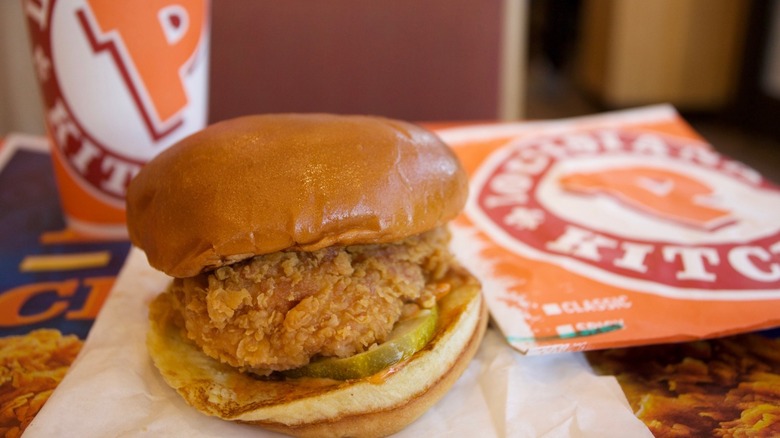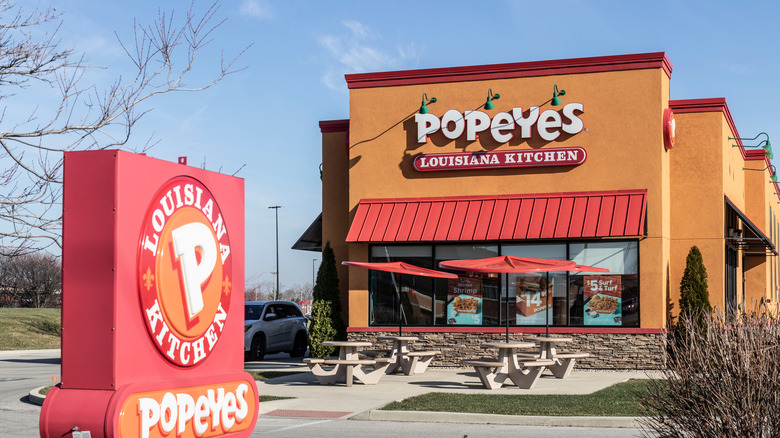Why Popeyes Is Still Packing Its Chicken With MSG
Since its founding in 1972, Popeyes fans fawned over the chain's fried chicken. Crispy on the inside, juicy on the inside, the southern staple has generated millions as a standalone dish and key ingredient for its now world-famous chicken sandwich.
Of course, though the chain could probably continue with the same recipe for life and be guaranteed a bevy of loyal followers, Popeyes understands that keeping up with the times and distinguishing oneself from competition means taking care to meet to consumer demands. And it seems based on some research, what people want is a guarantee that their food is sourced sustainably and with better-for-you ingredients.
And so it make sense that in last March, Popeyes announced a goal to stop using all artificial preservatives and colors in its fried chicken by the end of 2022, particularly MSG, via Eat This, Not That. If you need a reminder, MSG (short for monosodium glutamate) is a common additive used to enhance savory and umami flavors in food. Per Healthline, it's commonly found in many packaged snacks, soups, frozen dinners, and features as an ingredient at many fast food restaurants — including Popeyes main competition in the chicken (sandwich) wars: Chick-Fil-A, KFC, and McDonald's.
Popeyes' aim to get rid of MSG came along with what the chain called "quality commitments" for its chicken, including a goal to use antibiotic-free poultry and cage-free eggs. However, per a recent report things haven't exactly gone according to plan.
Supply chain issues slow Popeye's efforts to remove MSG
As you probably can imagine, changing up a chain restaurant's recipe — especially one for a beloved, signature item — isn't the kind of thing that happens overnight. It takes months of intensive recipe testing, training, and extra resources. And as reported by Bloomberg, unfortunately, Popeyes has not been immune to the recent supply chain issues and worker shortages, thus hampering its ability to get the ball rolling with its MSG-free chicken recipes. This week the chicken chain told the news outlet the fried chicken recipe will remain the same for now, and that it updated its new goal is to be free from the flavor enhancer and other artificial preservatives and colors by 2025.
According go FiveThirtyEight, concerns about MSG in food have been around for decades, primarily due to some (now questionable) studies from the '60s and '70s that linked excessive consumption of it to heart problems and neurological issues.
However, it's worth noting despite the controversial reputation it has received, per The Washington Post, there has been a volume of research that has debunked the claims that MSG is a kind of poison that should be avoided at all costs. Moreover, though a subset of people report experiencing reactions like nausea, dizziness after eating MSG, the FDA states MSG is "generally recognized as safe" to eat. Good to know!

